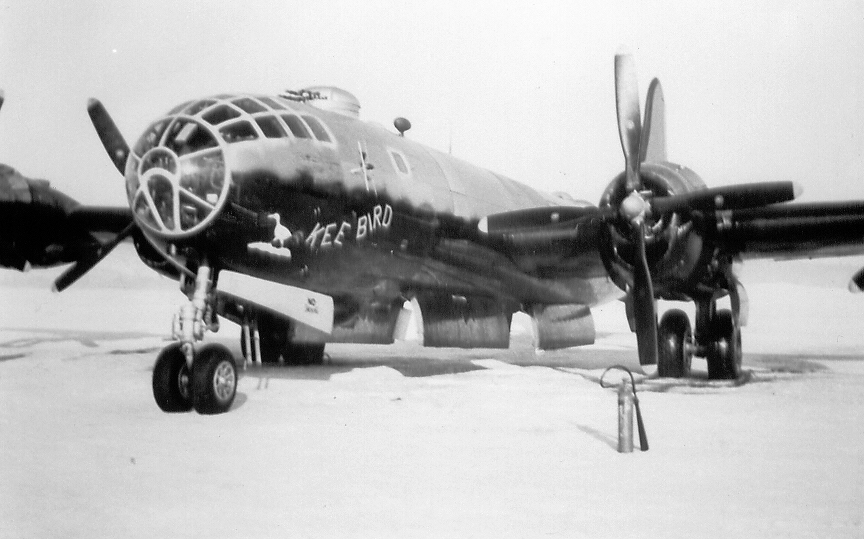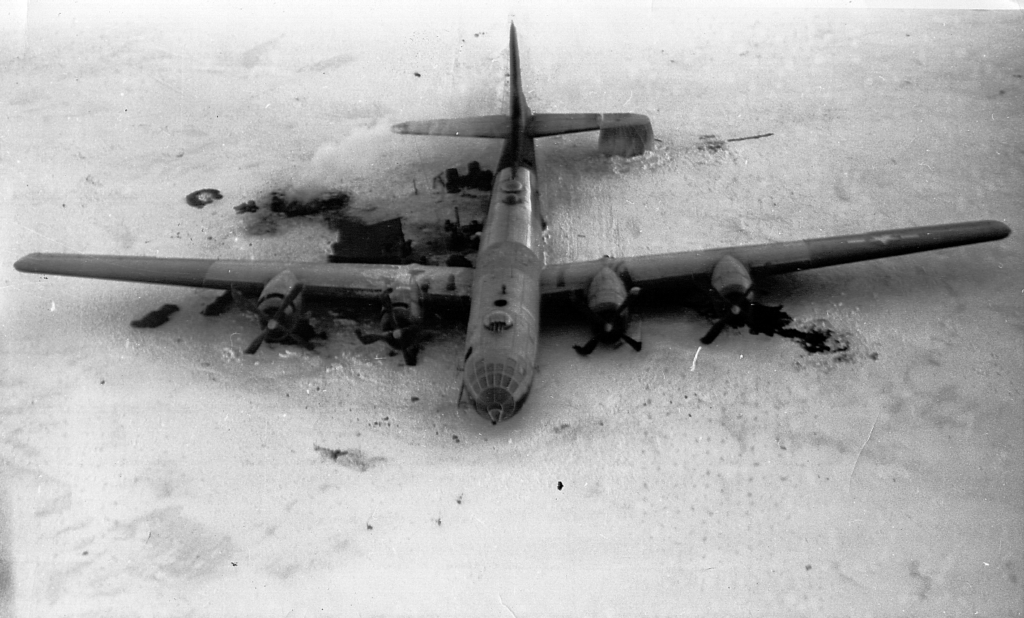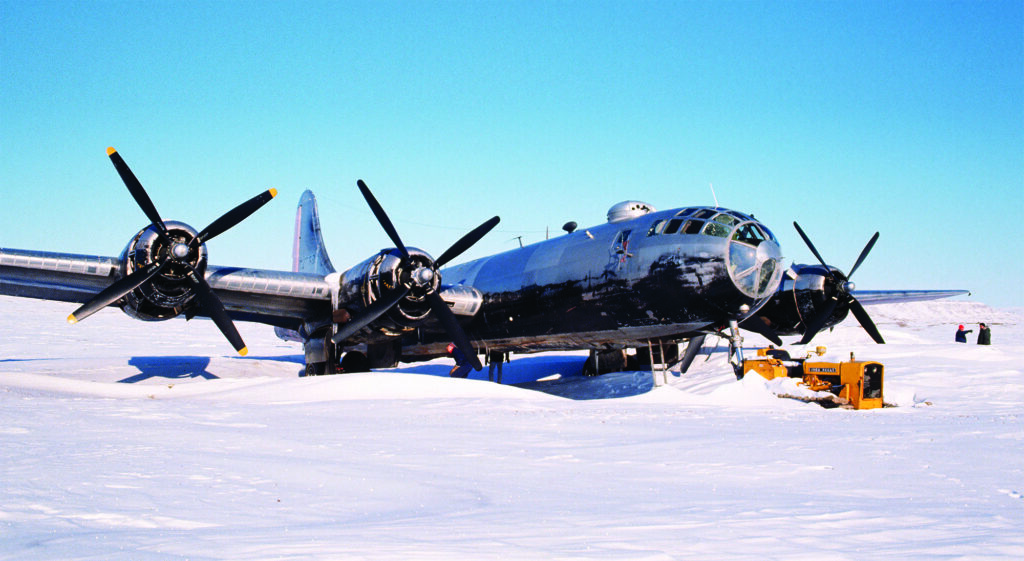
Kee Bird – B-29 lost in fire and ice
In the realm of the Arctic, on the north west tip of the vast expanses of Greenland’s frozen land, where icy winds and frigid temperatures test the limits of man and machine, a lone B-29 superfortress rests, forever confined to her icy grave. This was not always her destiny however.
Manufactured by Boeing Aircraft Company, she rolled off the assembly line in Wichita, Kansas in February 1945, destined for a life of daring missions and storied adventures. A marvel of engineering and technology, the Superfortress was designed to be a strategic high altitude bomber and the aircraft type is perhaps best known for it’s role in the bombing of Hiroshima and Nagasaki during the end of the 2nd World War.
Fast forward to February 21, 1947, the early years of the cold war, when Kee Bird embarked on a mission that would test her mettle like never before. Operation “Quick Freeze” beckoned, a bold endeavour to explore the Arctic regions and gather vital weather data. Piloted by a seasoned crew, Kee Bird departed from Ladd Army Airfield in Alaska, bound for the geographic north pole and back in what was essentially a navigational training flight.
As she soared through the skies, Kee Bird encountered her first taste of adversity. Mechanical gremlins plagued her equipment, causing issues that threatened to derail or delay the mission. Undeterred, the crew pressed on, relying on their skill and ingenuity to keep the aircraft flying.
The Arctic welcomed Kee Bird with open arms, offering an environment as beautiful as it was treacherous. Glacial peaks pierced the horizon, while ice-covered lakes lay like glassy mirrors beneath her wings. But nature’s beauty concealed its wrath, as frigid temperatures and fierce winds posed constant threats to both machine and crew.
Yet, Kee Bird persevered, inching ever closer to her destination. The crew, led by experienced aviators Lieutenant Colonel Howard C. Richardson and Captain Virgil B. Meroney, remained resolute in their pursuit of knowledge and exploration. Together with their crew and their plane, they battled the elements, relying on their training and the unfailing spirit of camaraderie that defined the brotherhood of aviators.
However, fate seemed determined to test Kee Bird’s resilience. As the mission reached its climax, an unexpected turn of events brought her to the brink of disaster. After passing over “target X”, the crew became lost amongst the variable magnetic fields of the Arctic, and this, combined with mechanical issues forced the crew to make an emergency landing on a remote frozen lake in northwest Greenland. The desolate expanse of ice, now known as “Blind Faith Lake,” would become both their refuge.
Kee Bird touched down on the unforgiving surface, her battered frame testament to the challenges faced during her Arctic odyssey. The crew, shaken but undeterred, immediately set to work transforming the aircraft into a makeshift shelter. They utilized every available resource, their survival instincts honed by years of training and a shared determination to conquer the harsh environment.
Then, on the third day of being stranded on the frozen lake, a glimmer of hope appeared on the horizon. A rescue team, undeterred by the Arctic’s inhospitable nature, made their way towards Kee Bird. The crew’s prayers were answered, and one by one, they were safely evacuated from the frozen landscape, leaving behind their companion, Kee Bird, to endure her icy solitude.

For over four decades, Kee Bird laid dormant, a silent sentinel amidst the Arctic’s frozen embrace. Her wings, once vibrant and mighty, now weathered the relentless passing of time. However, fate had other plans for the fallen warbird.
Plans for a recovery began in 1978 by Gary Larkins. Over the course of several years, he established communications with the US Air Force and the Danish Government seeking permission to recover the craft. And in 1993, all permissions had been granted. He secured financial backing and support from Tom Hess and Darryl Greenamyer, with sponsorship from the National Air and Space Museum.
And so in July of 1994, a team led by Larkins and Greenmayer embarked on a mission to salvage and restore the Kee Bird. A veteran aviator himself, Greenamyer understood the historical significance of the aircraft and sought to give her a second chance at life. In the spirit of adventure, they braved the unforgiving Arctic terrain, battling against bone-chilling temperatures and blinding blizzards.
Their mission was not for the faint of heart. Larkins and Greenamyer and their team meticulously worked to resurrect Kee Bird from her frozen slumber. They laboured day and night, repairing her damaged sections, replacing her engines and damaged props and bringing her back to her former glory. With each drop of oil, each wire reconnected, they breathed new life into the forsaken bomber.
The team worked trough the short summer of -94 and finished as much as they could before winter could take another hold of the land and the idle warbird. In May of -95 they returned to greet her once again and to finish the last of the repairs to make her airworthy. On the 21st of May 1995 her newly installed engines were fired up and the old girl sang once again. A runway of sorts was carved out in the snow using the small bulldozer the team had been using throughout their salvage attempt, and this would be the runway that the Kee Bird would now attempt to take off from.

However, destiny had a different narrative in store for Kee Bird. As she taxied down the makeshift runway, tragedy struck. A catastrophic fire from a jury-rigged fuel tank AUX power plant engulfed the aircraft, reducing her to a charred wreckage, dashing the dreams of those who had toiled so tirelessly to resurrect her.
The failed salvage attempt marked the end of Kee Bird’s story — a tale of courage, determination, and the indomitable spirit of exploration. She had soared through the Arctic’s unyielding skies, battled against the elements, and witnessed the highs and lows of a life lived on the precipice of adventure.
Today she only remains as a husk frozen in the icy lake, half sunk and in unrepairable condition, her burnt out cockpit sunk into the lake and her tail section now in front of the rest of the plane, likely due to a bad storm.
Yet, Kee Bird’s legacy endures, a reminder that sometimes, the greatest adventures come with the highest risks.



